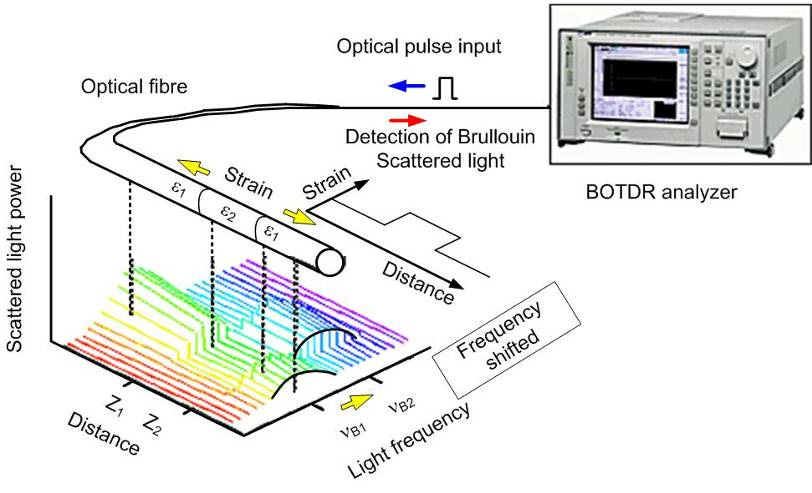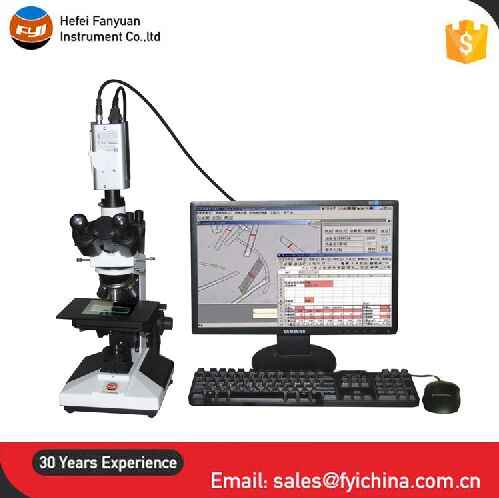Maximize Your Fibre Optic Efficiency: Recognizing Optical Fibre Size Analyser Innovation
The performance of fibre optic systems is seriously influenced by the accuracy of their size, an aspect typically forgot in the quest of optimal signal stability. Understanding the innovation behind optical fibre size analysers reveals the intricate equilibrium between dimension accuracy and production high quality. These gadgets not only boost conformity with market standards yet additionally provide real-time insights that can preemptively deal with prospective issues. However, the ramifications of their use extend past plain measurement; they can fundamentally alter the landscape of fiber optic efficiency. What elements should one think about to harness their complete possibility?
Value of Optical Fibre Diameter
The diameter of optical fiber plays a crucial duty in establishing the efficiency and performance of interaction systems. It influences a number of crucial parameters, including the mode of light breeding, attenuation, and data transfer capacity. Bigger diameters generally enable for several light modes, helping with higher information transmission prices. Conversely, smaller sized sizes have a tendency to support less modes, which can boost signal clearness and decrease crosstalk.

Moreover, recognizing the size's implications can bring about set you back savings by decreasing the demand for signal boosting and repeaters in comprehensive networks (optical fibre diameter analyser). In conclusion, the relevance of optical fibre size can not be overemphasized, as it straight impacts the overall efficiency and dependability of modern communication systems

Exactly How Size Influences Signal Quality
Signal top quality in optical fiber systems pivots dramatically on the size of the fiber. A smaller size can lead to higher attenuation rates, resulting in signal loss as light journeys through the fiber.
Conversely, bigger diameters usually enable improved light capture and minimized modal dispersion, enhancing signal clarity. In multimode fibres, a bigger core diameter can sustain several light modes, yet it may also present intermodal diffusion, which can degrade signal quality. Selecting the optimal fiber size is critical for achieving the desired efficiency in specific applications.
In addition, the interaction between the fibre size and the wavelength of the light made use of plays an important duty in determining the efficient transmission range and general signal honesty. Recognizing how fibre size impacts signal high quality is vital for network developers and designers striving to enhance optical fiber systems for trusted, high-speed information transmission.
Overview of Size Analyser Innovation
In many optical fiber manufacturing processes, precise dimension of fiber size is essential for making sure consistent performance and high quality (optical fibre diameter analyser). Diameter analysers are advanced tools designed to examine the physical measurements of optical fibres with high precision. They employ advanced optical and laser innovations to determine the size, ovality, and concentricity of the fibre, thus giving crucial information for high quality control
These analysers can run in-line throughout the manufacturing process or as part of off-line testing protocols. In-line systems allow real-time tracking, enabling makers to adjust parameters promptly, thus preserving optimum production problems. Off-line analysers, on the other hand, supply thorough evaluations of sets, making certain that any kind of deviations from defined resistances are recognized and resolved.
Size analysers considerably add to the decrease of issues in optical fibres, improving overall product dependability. By constantly determining crucial parameters, these modern technologies facilitate compliance with market requirements and specifications. As the need for high-performance optical fibers continues to rise, the function of size analysers becomes increasingly crucial in accomplishing the preferred high quality and performance requirements in fiber optic systems.
Trick Functions of Fiber Diameter Analysers
Although different versions of fiber size analysers exist, they generally share numerous crucial attributes that enhance their capability and reliability. Among the most significant functions is high-resolution measurement abilities, which ensure precise size analyses, vital for keeping quality control in fiber production. Furthermore, many analysers integrate advanced optical sensing units designed to spot minute variants in fiber size, Get More Information hence supplying invaluable data for procedure optimization.
One more vital function is real-time tracking, allowing drivers to receive immediate feedback find out this here on fibre size throughout the manufacturing procedure (optical fibre diameter analyser). This capability assists in fast changes and minimizes the probability of problems. Lots of analysers also come furnished with easy to use interfaces, allowing drivers to quickly navigate with settings and data outputs
Additionally, robust data storage and evaluation functionalities are crucial for tracking historical efficiency fads and making certain compliance with market standards. Some versions also provide connection alternatives for integration into existing manufacturing control systems, enhancing total functional performance. Small and portable styles permit for flexible deployment within production atmospheres, ensuring that top quality guarantee processes are seamless and effective. These features jointly add to the effectiveness of fibre size analysers in enhancing fiber optic efficiency.
Best Practices for Fibre Optimization

First, regular calibration of optical fibre size analysers is vital. This guarantees exact measurements and reduces possible disparities that could influence performance. Next off, preserving a tidy workplace is important; dirt and impurities can result in indicate degradation.
In addition, it is necessary to choose fibers that satisfy specific application needs. This involves assessing elements such as depletion, transmission capacity, and environmental conditions. Correct installation methods should also be complied with, including staying clear of sharp bends and too much stress, which can compromise fibre integrity.
Moreover, employing advanced tracking systems can promote real-time efficiency evaluations, making it possible for prompt identification of concerns. Routine testing and upkeep ought to be conducted to make sure that fibers stay within ideal functional specifications.
Finally, training workers on the current fiber optimization technologies and techniques will enhance their capability to apply efficient strategies. By following these ideal practices, organizations can substantially improve the performance and life-span of their optical fibre systems, ensuring efficient interaction and information transfer.
Conclusion
Finally, the combination of optical fibre diameter analyser technology is important for maximizing fiber optic performance. By ensuring exact dimensions of fiber dimensions, these analysers substantially enhance signal high important source quality and minimize losses throughout information transmission. Routine calibration and upkeep of the analysers are vital to promote optimal performance and conformity with industry standards. Ultimately, the application of this modern technology assists in boosted information transmission prices and reinforces signal honesty, adding to the total effectiveness of fibre optic systems.
Signal top quality in optical fibre systems pivots substantially on the diameter of the fiber.In several optical fiber production procedures, precise measurement of fibre size is essential for ensuring constant efficiency and high quality. As the need for high-performance optical fibres proceeds to climb, the role of size analysers ends up being progressively crucial in accomplishing the desired quality and efficiency criteria in fiber optic systems.
These features collectively add to the efficiency of fiber diameter analysers in optimizing fibre optic efficiency.
In verdict, the assimilation of optical fiber diameter analyser innovation is critical for optimizing fibre optic efficiency.